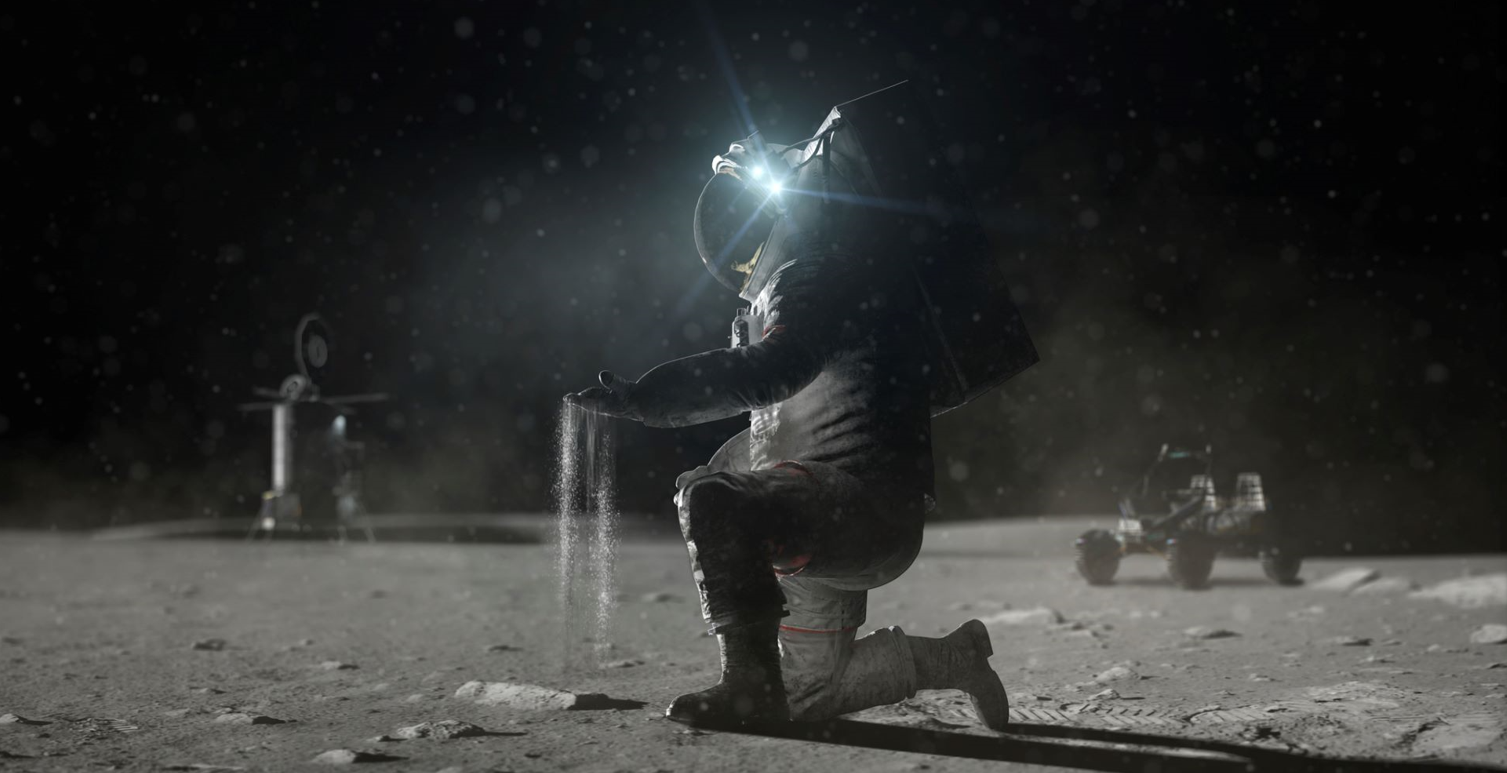NASA Expands Commercial Partnerships to Include Spacesuits and Spacewalking Operations
As NASA prepares to send humans back to the Moon through the Artemis program to explore and develop a sustainable presence there — a new suite of spacesuits and support systems are needed to enable the next generation of astronauts to explore the lunar surface at the South Pole for the first time.
NASA has published a draft Request for Proposal (RFP) seeking industry feedback on a planned solicitation for the provision of commercially owned spacesuits and services that will be used for spacewalks on the International Space Station, Moon, and beyond. The draft RFP is a follow on to the Request for Information issued in April seeking input on a new strategy for procuring the necessary spacesuits, support equipment, and support services for this task.
NASA has already proven that it can rely on its commercial partners for everything from launch services, commercial crew and cargo deliveries to the International Space Station, and other elements of the fledgling Artemis program — including Human Landing System services and Deep Space Logistics. This RFP expands on the current strategy by bringing Extravehicular Activity (EVA) spacesuits and services into the mix.
Under the Exploration Extravehicular Activity Services, or xEVAS, Contract, NASA anticipates procuring safe, reliable, and cost-effective end-to-end commercial EVA support for the International Space Station, Artemis, and advanced human spaceflight missions.
The agency is seeking proposals for one or more commercial partners who will, in collaboration with NASA, design, develop, build, assemble, test, demonstrate, certify, and deliver flight and training exploration EVA, or xEVA, systems and services capable of meeting NASA’s bold missions. The commercial partner, or partners, will also train crew members on their xEVA systems and manage their system operations during the excursions.
By 2024, this procurement hopes to achieve one or more suited demonstrations, with the full suite of commercial EVA support beginning as soon as possible thereafter. NASA intends to be one of the many customers for these one-of-a-kind services.
Building on more than 55 years of lessons learned during American spacewalks and the expertise of the workforce at NASA’s Johnson Space Center, the agency intends to continue its in-house efforts to design and develop the xEVA system and futuristic exploration spacesuit known as the Exploration Extravehicular Mobility Unit, or xEMU, in parallel with this budding industry activity. NASA, too, will provide all appropriate data from its design and development work to commercial companies through a newly available technical data library. In addition, the agency has provided NASA facility video tours and capabilities that are available for industry to leverage through partnership agreements established with the applicable NASA center’s Partnerships Office. Uniting with commercial industry partners in this way opens up the global space economy and further stimulates local aerospace business development beyond our gates.
“We’ve benefitted from decades of spacewalking experience, and have invested significant resources into developing new EVA technologies over the last decade. This work will continue and be shared with industry to speed the development of their own capabilities,” said Chris Hansen, manager of the EVA Office.
This draft RFP is open to companies able to demonstrate the design, development, build, and certification of safe, reliable, spacesuits and services that will be used in spacewalks across varying dust, thermal, operational, and gravity conditions. NASA anticipates making a selection by the end of the calendar year.
These innovative contracts are just another way that NASA is joining forces with partners, commercially and internationally, to complete the daring missions that will enable human space exploration to otherworldly destinations like the Moon and Mars. Building on NASA’s storied history of hundreds of successful spacewalks in low-Earth orbit and on the Moon during Apollo, the agency is leaning on industry to find revolutionary new ways to incorporate cutting-edge, reliable technologies and foster invention not only in the realm of spacecraft design, but with the spacesuits astronauts require to venture beyond the safety of their outposts — to truly kick up dust and explore.








